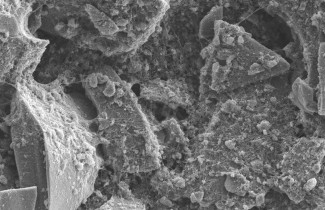The doctoral dissertation in the field of Applied Physics will be examined at the Faculty of Science and Forestry, Kuopio Campus.
What is the topic of your doctoral research? Why is it important to study the topic?
The demand for storing energy for electric vehicles and portable electronics is expected to grow quickly in the near future. To answer this demand, advanced Li-ion batteries have attracted significant attention because of their high energy and power density. Graphite is commonly used as LIB anodes, but it is not suitable for advanced LIB technologies because of its low capacity. Anodes with higher capacities are needed to achieve higher energy and power density. Silicon (Si) is a promising alternative anode material for LIBs because it has a ten times higher capacity than the currently used graphite. However, silicon anodes are unstable during charging/discharging because of their large volume expansion and cannot be used in LIBs as such. To address the issue, my doctoral research focuses on developing mesoporous silicon as LIB anode material. The material characteristics and their effects on the battery performance were studied, and various surface modifications were verified to improve the performance. Also, sustainability was considered by testing bio-sourced silicon in LIB anodes.
What are the key findings or observations of your doctoral research?
This thesis developed strategies to overcome the challenges of mesoporous Si anodes, including volume expansion/contraction, unstable solid electrolyte interphase, low electrical conductivity, and high production cost. i) the effect of the pore characteristics of mesoporous silicon on battery performance was studied. Based on the correlation analysis, the low surface area, low porosity, large pore diameter, and thin Si film improve the performance of the Si film anode utilized in Li-ion micro batteries. ii) The oxide layer on silicon acted as a protective layer and stabilized the Si surface, significantly improving the battery performance of Si/SiOx. III) Silicon hybrid materials were developed with functionalized porous silicon and carbon nanotubes (CNTs) through conjugation. When silicon with carboxyl group was conjugated with CNT with amine groups exhibited a superior rate capability performance. iV) Low-cost silicon anode was developed from inexpensive biogenic waste (barley husk ash) through a simple, green, and environmentally friendly process. The magnesiothermic reduction method was efficient in reducing the silica to silicon. The battery results indicated that biogenic silicon suffered from low purity and poor conductivity; therefore, the quality of the material needs to be improved.
What are the key research methods and materials used in your doctoral research?
Electrochemical etching and magnesiothermic reduction methods were used to manufacture mesoporous silicon. The physicochemical properties of the prepared materials were characterized by using XRD, SEM, Raman, EDS, Nitrogen-sorption studies and XPS. The battery performance was evaluated in a half cell by electrochemical methods such as cyclic voltammetry (CV), galvanostatic charge-discharge and electrochemical impedance spectroscopy (EIS).
The doctoral dissertation of Nathiya Kalidas, MSc, entitled Mesoporous silicon based anode materials for lithium-ion batteries will be examined at the Faculty of Science and Forestry, Kuopio Campus, Snellmania, SN201. The Opponent will be Professor Thierry Djenizian, Ecole Nationale Superieure des Mines de Saint-Etienne, and the Custos will be Professor Vesa Pekka Lehto, University of Eastern Finland. Language of the public defence is English.



